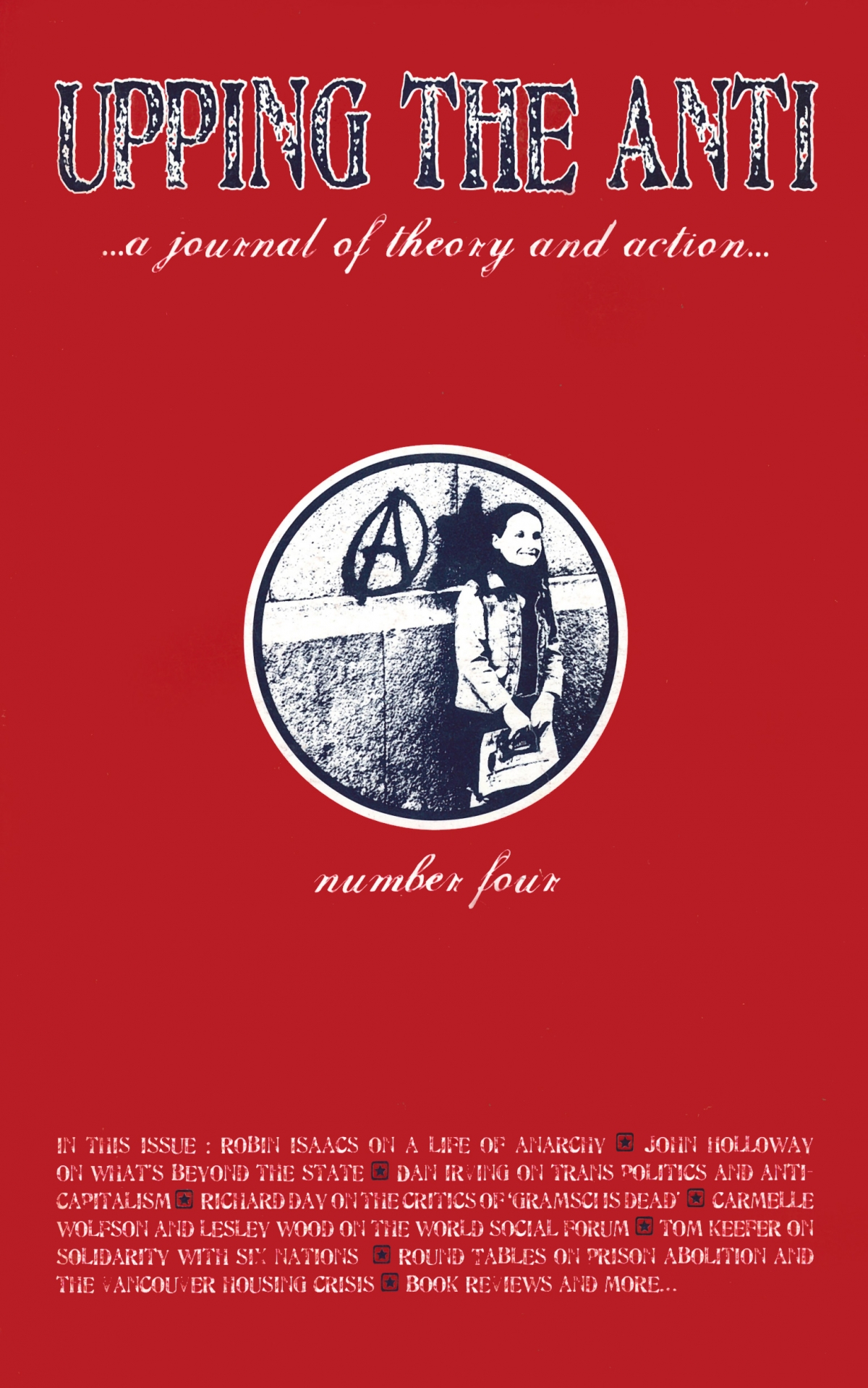Means and Ends
Dear Upping the Anti,
Reading “Making friends with Failure” (UTA 3), I found that AK Thompson’s account of the shortcomings that mark Richard Day’s celebration of contemporary “affinity” politics cut right to the heart of the matter. I would like to take this opportunity to respond to his assessment and extend it to the current political situation in Western Europe.
To my mind, Thompson’s fiercest argument concerns Day’s celebration of subcultural strategies of prefiguration. If we cannot win, Day seems to suggest, then we must endeavor to build semi-permanent autonomous zones and little utopias where life can approximate the world that ought to be. If there is nothing to win for the future, then activists can do no better than to build a better world right here and now – even if only a few of us get to enjoy it.
Thompson is clear in pointing out the elitist implications of such a strategy. And he is vivid in his account of how we end up missing important aspects of the struggles in the Global South when we displace a “politics of demands” with Day’s “politics of the act.” There is no need to re-state the arguments here.
From a European perspective, however, the significance of autonomous spaces can be seen to extend well beyond the limits imposed upon them by Day’s account. Rather than being conceived as ends in and of themselves, recent European history tells us that these spaces must instead be viewed strategically and, hence, instrumentally. Because strategy necessitates a decision concerning the means needed to reach some as of yet unrealized goal, strategy itself disappears if we collapse means into ends.
Autonomous spaces – and in Europe one has to look no further than squatted social centres – have provided the social means by which we’ve managed to create significant political conflict. Considered from the standpoint of scarce resources, social centers have been indispensable in instrumental terms. The components of the semi-permanent infrastructure developed by the autonomous movements of the ‘70s and ‘80s (mobile food, kitchens, prisoner support groups, safe meeting spaces) were crucial in enabling the anti-capitalist wing of the anti-globalization movement to develop and engage in confrontational tactics.
Arising from the dual strategy through which activists created autonomous spaces in order to facilitate political confrontations has been a correspondingly rapid circulation of struggles. This phenomenon has been in evidence since the end of the 1990s. In Europe, this circulation – enabled through new forms of computer-mediated communication – manifested itself as, and congealed, in the form of a dense network of social centres. Building on social center networks, anti-globalization activists were able between 1999 and 2001 to circulate new strategies of conflict more quickly than repressive forces were able to answer.
Though they might not correspond with current prospects in the North American context, contemporary anti-capitalist networks must do all they can not to forget the experience of radical anti-summit protest. With respect to both instrumental action and the circulation of struggles, one of the most important lessons was that it was possible to engage in confrontational direct action methods within the context of mass actions. Mass action and direct action can coexist and complement one another. And, while it is true that decentralized direct actions are often both easier and more satisfying to organize than are mass mobilizations, we nevertheless have to acknowledge that they tend to be less contagious.
Whatever setbacks have befallen our movements since the beginning of America’s war of terror, there are now many compelling reasons to believe that we’ve reached a critical moment. All over Europe, activists seem poised on the threshold of the next phase. In June, the G8 will hold its summit in the North of Germany. Activists will be there in large numbers. The mood is for disruption. Because of social centres and autonomous networks, activists have experienced a degree of real continuity in their efforts to organize against the G8 in recent years. On top of that, autonomous and anti-capitalist networks seem to be better coordinated than ever before.
For organizers in Europe, one of the principle tasks leading up to this action has been to develop our capacity to incorporate direct action methods into mass action contexts. In order to get a taste of what’s in store for the G8, we need look no further than the massive resistance to the eviction of the Ungdomshuset in Copenhagen. As a political phenomenon, the social centre, despite Richard Day’s account, seems destined to be an important component in the circulation of struggles and in the coordination of instrumental action.
Comradely,
Kriss Sol
Amsterdam, Netherlands

